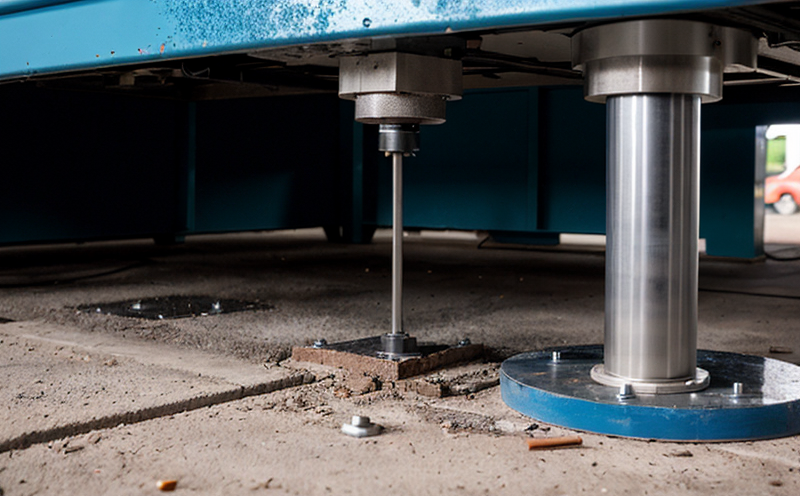ISO 17296-3 Test Methods for Residual Stress in AM Processes
The International Organization for Standardization (ISO) has developed a series of standards to ensure the quality and reliability of additive manufacturing (AM) processes, with ISO 17296-3 specifically addressing residual stress testing. This standard provides methodologies to measure the internal stresses within parts produced by AM technologies, which can significantly impact their performance and longevity.
Residual stress in AM parts is a critical factor due to the unique nature of AM processes. Unlike traditional manufacturing methods, AM processes involve layer-by-layer deposition of material, which introduces complex thermal and mechanical stresses during cooling and solidification. These stresses can lead to warping, cracking, and reduced fatigue strength if not properly managed.
The ISO 17296-3 standard outlines several test methods tailored for different types of AM processes. One such method is the use of strain gauges, which are bonded directly onto the part surface or embedded within it during manufacturing. This approach allows for real-time monitoring of stress levels as the part cools and solidifies.
Another method involves the use of X-ray diffraction (XRD) techniques to measure lattice strains in crystalline materials. This technique is particularly useful for metals where residual stresses can affect crystallographic orientation and phase stability. The standard also specifies the use of neutron diffraction, which provides high-resolution stress analysis across a wide range of temperatures.
For non-metallic materials such as polymers or composites, ISO 17296-3 recommends the use of ultrasonic testing (UT) to assess internal stresses. UT can detect changes in material properties due to residual stresses and provide insights into the structural integrity of parts.
The standard also includes considerations for specimen preparation, ensuring that the test samples accurately represent the part's geometry and microstructure. This involves careful selection of sample size and orientation to avoid biasing results towards surface effects or local anomalies.
Once the testing is complete, the data collected from these methods are analyzed using statistical techniques to determine the average residual stress levels across the entire part. Reporting typically includes a detailed summary of test parameters, specimen preparation details, and a discussion of any deviations from expected values. Compliance with this standard ensures that AM parts meet stringent quality requirements and can be confidently used in demanding applications.
Understanding and managing residual stresses is crucial for optimizing AM processes and designing parts that perform reliably under various conditions. By adhering to the ISO 17296-3 standard, manufacturers can ensure that their products meet international quality standards and are fit for purpose across a wide range of industries.
The implementation of these test methods not only enhances product reliability but also facilitates continuous improvement in AM technologies by providing actionable data on process optimization. This is particularly important as the adoption of AM continues to grow, driving demand for higher quality and more consistent parts.
Why It Matters
The measurement of residual stress in additive manufactured parts is crucial because it directly impacts the structural integrity and performance of these components. Residual stresses can lead to premature failure, reduced fatigue life, and even catastrophic failures if not properly managed.
For quality managers and compliance officers, ensuring adherence to standards like ISO 17296-3 is essential for maintaining product consistency and meeting regulatory requirements. R&D engineers benefit from this testing as it provides insights into process parameters that can influence stress levels, allowing for iterative improvements in part design and manufacturing.
From a procurement perspective, knowing the residual stress characteristics of parts ensures that they meet the necessary performance criteria before being incorporated into larger assemblies or systems. This reduces the risk of costly rework or failures downstream in the supply chain.
Eurolab Advantages
EuroLab, as a leading accredited laboratory, offers comprehensive testing services that comply with ISO 17296-3 and other relevant international standards. Our expertise in AM processes allows us to provide accurate and reliable residual stress testing across various material types and geometries.
We utilize state-of-the-art equipment including advanced strain gauge bonding techniques, X-ray diffraction instruments, neutron diffractometers, and ultrasonic probes to ensure precise measurement of internal stresses. Our highly skilled technical staff ensures that all tests are conducted in accordance with the latest standards and best practices.
Our clients benefit from our ability to provide detailed reports that not only document test results but also offer recommendations for process improvements based on identified stress levels. This holistic approach helps manufacturers optimize their AM processes, leading to higher quality products and increased confidence in their use across diverse applications.
Why Choose This Test
Selecting the appropriate testing method for residual stress measurement is critical for ensuring accurate results that reflect real-world conditions. ISO 17296-3 provides a robust framework to choose from various methodologies depending on the specific requirements and characteristics of the AM parts being tested.
For metals, X-ray diffraction offers high-resolution stress analysis across different phases and temperatures, making it ideal for complex alloys where phase transformation during cooling can significantly affect residual stresses. Strain gauge methods are particularly suitable when direct measurement is required on large-scale parts or in environments where non-destructive testing isn't feasible.
In the case of polymers and composites, ultrasonic testing provides a non-invasive way to assess internal stresses without altering the part's integrity. This method is especially useful for parts with intricate geometries that might be challenging to test using other techniques.
By choosing ISO 17296-3 compliant tests, manufacturers can ensure they are meeting international quality standards and gaining valuable insights into their processes. This not only enhances product reliability but also supports continuous improvement efforts within the organization.





